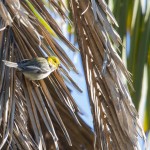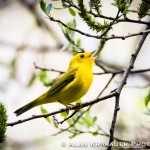I’ve always enjoyed sharing my love of birds and nature, whether with students in the classroom, field techs on a research trip, or strangers I might meet on the trail. In fact, this was a big reason why I started my photography business. Since I haven’t been able to do this much in person this year, I’ve started to write up some short nuggets to share online. These have been focused on Wildcat Canyon (my local open space), and I’ve been posting versions of these on our Nextdoor network so I can reach neighbors who have ready access to the park. So far the feedback has been really positive and I’ve gotten a lot of messages of thanks along with questions and observations shared.
—-
SUMMER BIRDS IN WILDCAT CANYON PARK. With the hills covered in beaten down brown grass, August may not seem like an interesting time to look for birds, but it is! What’s going on in the park these days? I’ve put together a few highlights from my own experience walking there, with some help from a citizen science platform called eBird. For example, eBird can summarize the seasonal occurrence of all the birds that have been reported in Wildcat Canyon.
https://ebird.org/barchart?r=L388820&yr=all&m=
What have you been seeing? YOUNGSTERS: Most birds have already finished their nesting season, but family life for many species extends once the nest is empty. Look for groups of Dark-eyed Juncos and Spotted Towhees with the fledglings still showing streaky plumage. Young crows and ravens sound like spoiled brats as they give their higher nasal begging calls. Keep your eye on the ridges for young red-tailed hawks taking advantage of the updraft to look for rodents on the slopes below. In past years I’ve seen more than a dozen from one spot! And our fledgling Great-horned Owls should still be around somewhere!
FALL MIGRATION BEGINS: It’s still a bit early for many of the migrating songbirds, but it’s never too soon to start looking for birds making their way to or through the Bay Area in the fall. I’ve seen a few notices of Western Tanagers already making their way south, including one along McBryde Avenue near the park. These are a great bird to find since they do only pause here in the East Bay Hills during migration. Plus they are gorgeous! Try to get a good look at their beaks to make sure you can separate them from the similarly-sized Black-headed Grosbeak or Hooded/Bullock’s Orioles. For a tougher “migration challenge” in the park, look for another bird that only visits briefly in the spring and fall, the Hermit Warbler. I’ve only seen these little yellow-faced beauties a few times.
WHO’S LEAVING. Some of our summer breeders have left or will leave by the end of August. For example, Ash-throated Flycatchers and our cavity-nesting Tree and Violet-green Swallows, common sights throughout the spring, will be much harder to find by Labor Day. Also, get your last looks at Lazuil Bunting if you can find some, although they are more easily found in the spring when their cheerful song rings out from the mustard and willows.
OUTSIDE THE PARK: Actually, the best migrations going on right now are not in the hills and woodlands. Instead, check along the bay, coast, or other spots where there’s lots of mud or water. I’m talking about Shorebirds! Many species of sandpipers, plovers, and their relatives breed well to the north. Many species have already started their southward migration. Often the adults leave the breeding grounds first, and the fledglings will leave a little later. Shorebirds are one of the trickiest groups of birds to master, and you’ll benefit from good optics like spotting scopes to see more of the fine detail. Even if sorting through field guides to identify shorebirds isn’t (yet) your cup of tea, this is still a great time to appreciate shorebirds in the Bay Area. Not only are some of the adults still in their breeding plumage, but the young may be sporting crisp colorful new feathers as well.
Good birding!


